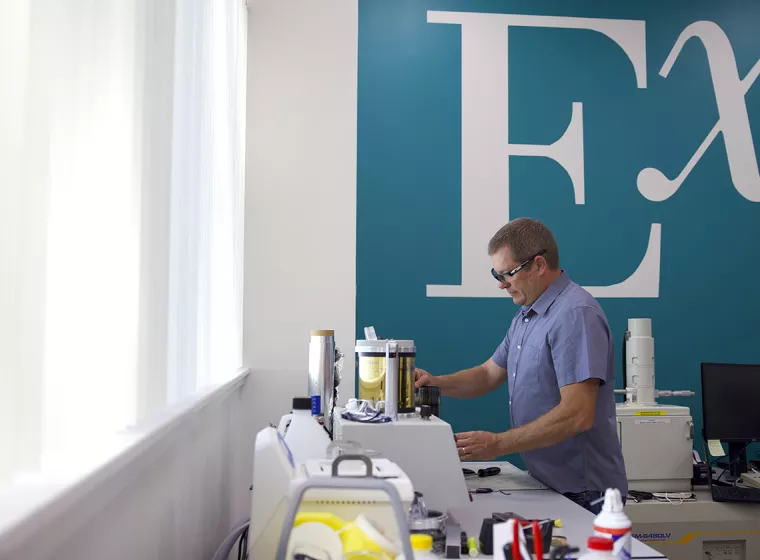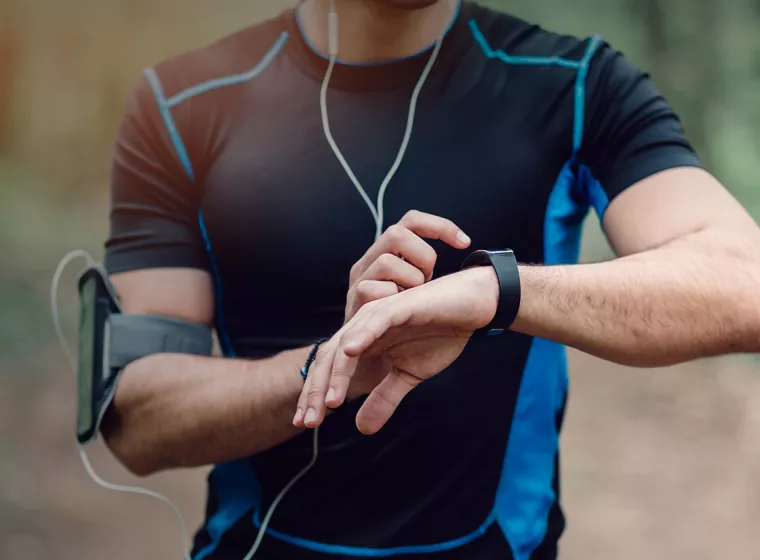March 13, 2023
Embedding safety into your lifestyle & clinical wearable product design
Today's wearables, from smartwatches to sensors embedded in clothing or attached directly to the body, offer both users and physicians monitoring capabilities that could once only take place in a clinical setting.
While in the past people might have been prescribed a monitor or device or required to report to an office for observation, the ability to gather valuable health data continuously has expanded well beyond the treatment room. Vital information can now be gathered everywhere people live, eat, sleep, exercise, and travel. We are at a crossroads where boundaries are blurred between clinical settings and everyday life, and there are likely to be more manufacturers developing wearables that are adaptable to both settings.
New wearables, new challenges
While exciting, the increasing technological capabilities and ubiquity of modern wearables bring new safety challenges, particularly potential skin irritation and other biocompatibility issues that may result from prolonged user contact, as well as new regulatory considerations.
Clinical devices must meet higher requirements regarding user risk and perform with greater reliability and accuracy.
As certain wearables continue to incorporate the advanced health-monitoring technologies typically associated with medical devices, integrating safety features into product designs from the outset of development becomes increasingly important. Manufacturers are recognizing the criticality of broader assessments for factors such as wearable-specific risks, use scenarios, biocompatibility implications, and product stewardship at all points in the product lifecycle — from design, materials selection, and sourcing to manufacturing and end use.
A lifestyle or a clinical wearable?
How a wearable's risk profile is evaluated depends on whether it's considered a low-risk lifestyle or fitness wearable or a clinical wearable. While lifestyle wearables promote health and wellness, clinical wearables are prescribed by a physician to improve clinical outcomes, e.g., supporting accurate diagnoses and monitoring treatment effectiveness. Clinical devices must meet higher requirements regarding user risk and perform with greater reliability and accuracy.
According to the Food and Drug Administration, the main distinguishing feature is intended use. If it's intended "for maintaining or encouraging a healthy lifestyle," it's a lifestyle or fitness wearable. If it's intended for clinical use to improve chronic disease, it's a clinical or medical grade wearable device and subject to FDA Class II clearance.

Getting ahead with biocompatibility assessments
Common wearables & biocompatibility risks
Whether a lifestyle or clinical device, wearables can cause skin irritation, a common safety risk. Leaching from the device, such as from metallic components, synthetic fabrics, or biosourced materials, can cause rashes, a variety of allergic responses, or bacterial buildup through dermal contact. Chemical reactions, such as galvanic corrosion, can also occur when sweat comes in contact with certain electrical components in wearables, potentially posing both device and health risks. Additionally, mechanical contributions, such as abrasion or prolonged pressure from user interaction with the wearable can also contribute to the risk of irritation.
Depending on the type of wearable, some risks are more common than others:
- Wearable accessories: Fitness trackers, wrist bands, smartwatches, etc. may rub against the user's skin or leach chemicals after prolonged dermal exposure as the user sweats, causing irritation, rashes, or allergic reactions.
- Wearable articles: Fabric or clothing that contains sensors or other electronics can cause irritation and allergic reactions. As fibers are subjected to friction from use and laundering, "smart" clothing may release chemicals or chemical reactions may occur as electrical components or sensors are exposed to sweat or other bodily fluids such as skin oil components.
- Wearable patches: Semi-permanent wearable patches that can be applied directly to the skin for prolonged periods often incorporate electronic circuitry. Skin irritation resulting from circuitry corrosion or other leaching events may be more likely compared to other wearable products.
- Inserted wearables: The chemical or mechanical properties of hearing aids, ear buds, and other wearables inserted into body orifices may trigger safety hazards when they come into contact with more sensitive areas like the ear and other body parts.
Biocompatibility testing for expected use
Wearable developers can reduce the risk of adverse reactions through intentional design, including material selection considerations, and in some cases, analytical testing. Understanding a wearable's risk factors and specific use environment early in the design process through pre-market pilot studies that capture potential biocompatibility hazards, including materials composition and device compatibility, is one opportunity.
Decision-making driven by product stewardship goals has the potential to generate impacts ranging from social and economic improvements to better recyclability and brand reputation.
Design verification through extractables and leachables testing, sweat tests, and other chemical characterization tools can also help inform biocompatibility assessments and mitigate adverse reactions under normal use conditions. In addition, gap assessments later in the design process can help identify missing information, testing, or design parameters that may prevent the wearable from performing as expected under normal use conditions.
Product stewardship & biocompatibility
Beyond the design process, another important way to mitigate consumer risk is by considering biocompatibility in the context of product stewardship. As many companies are striving to reduce their environmental impact across the whole of their product development processes and supply chain, the choice of new, more sustainable materials is likely to increase. Decision-making driven by product stewardship goals has the potential to generate impacts ranging from social and economic improvements to better recyclability and brand reputation; however, new materials and new suppliers require qualification and validation. Among other design considerations, biocompatibility testing is even more critical in this context. Manufacturers can benefit from developing material sourcing systems that evaluate raw materials as well as qualifying multiple vendors so that validated materials for a given product are consistently available through the supply chain.
If reports of irritation or injury occur once a wearable has been released, root-cause assessments can identify the source and create opportunities to consider design changes that may help improve safety. Root-cause assessments and failure analysis can help uncover whether leachates may be causing skin irritation, elucidate potential material incompatibilities, and identify specific use cases and their risk factors. These assessments can be critical components of effective biocompatibility product stewardship and overall risk management.
Reshaping the healthcare industry
The demand for wearable technology continues to increase, giving rise to new smart product designs that come with their own set of safety concerns. As these advancements in technology and applications continue to blur the line between lifestyle and clinical devices, wearables have the potential to reconfigure the healthcare and lifestyle landscapes — and improve human health by expanding value-based, personalized medicine at a mass scale. Development of these new products will require a robust biocompatibility framework to mitigate adverse safety effects.
What Can We Help You Solve?
Exponent combines core competencies in chemistry, chemical engineering, physics, polymer science, materials engineering, and batteries to assist clients in the development of new technologies, as well as the evaluation of materials challenges in a wide variety of industries and applications, including consumer products, electronics, medical devices, industrial equipment, transportation, energy, and emerging technologies.

Analytical Chemistry Laboratory Services
Develop custom tests and test protocols for your toughest materials challenges.

Chemical Toxicology & Health Risk Assessments
Exposure assessments, toxicity evaluations, and support for issues of toxicology and mechanistic biology.

Materials Used in Medical Devices, Implants & Surgical Tools
Expert evaluation of the materials used in medical devices, implants, and surgical tools.

Polymers & Materials Used for Consumer Electronics
Select, optimize, and test polymers and materials used in consumer electronics.

Polymers Expertise for Consumer Products
Rigorous testing and analysis of polymers in consumer products.

Product Stewardship
Overcome business and regulatory challenges at every stage, from research and design to disposal and recycling.

Real-World Evidence Consulting
Leverage real-world data to improve healthcare decisions.




